Multiport Converter Utility Interface with a High-Frequency Link for Interfacing Clean Energy Sources (PV\Wind\Fuel Cell) and Battery to the Power System: Application of the HHA Algorithm
Abstract
:1. Introduction
- Compact and Lightweight Design: Our system boasts a compact and lightweight design, simplifying installation and integration with existing infrastructure;
- Enhanced Efficiency and Reliability: The system is meticulously engineered to maximize energy output from multiple CESs while prioritizing unwavering reliability for continuous power generation;
- Efficient Utilization of Solar and Wind Energy: By seamlessly integrating solar and wind energy modules, our system optimally harnesses these renewable sources, ensuring more complete utilization of available CESs;
- High Voltage Output with Minimal Components: Our investigated converter achieves high voltage at the output while employing a minimal number of components, streamlining its functionality;
- Versatile Integration of CESs: The system exhibits versatility by accommodating various CESs, including Fuel Cells (FCs), wind, and Photovoltaic (PV) modules, thereby creating a resilient and diversified power generation network;
- Bidirectional Input Ports: To facilitate battery charging and discharging, one of the input ports on our unique multiport converter is bidirectional, allowing for greater flexibility. The investigated converter comprises three inputs and a single output;
- Backup Power Source: In addition to its primary function, this hybrid system can serve as a reliable backup power source in situations where local generators fall short, guaranteeing uninterrupted power supply to critical loads and enhancing overall system reliability.
2. Addressed System
2.1. Description of the Investigated System
2.2. System Components Modeling
2.2.1. Modeling of PV
2.2.2. Modeling of Wind System (WS)
2.2.3. FC model
3. Control System and Application of HHA Algorithm
3.1. Detailed Control System
3.2. HHA Algorithm
4. Discussion of Simulation Results
4.1. Inverter Output
4.2. Wind Turbine (WT) Output
4.3. FC Output
4.4. PV and DCL Output
4.5. Investigated System Dynamic Performance
5. Conclusions
Author Contributions
Funding
Institutional Review Board Statement
Informed Consent Statement
Data Availability Statement
Acknowledgments
Conflicts of Interest
Abbreviations
| CESs | Clean energy sources |
| FC | Fuel cell |
| PV | Solar energy |
| MSs | Multiport structures |
| SPA | Single-port architecture |
| DC | Direct current |
| WS | Wind system |
| IGBT | Insulated gate bipolar transistor |
| BPC | Bidirectional power converter |
| VF | Voltage feedback |
| CTs | Cell temperatures |
| EM | Energy management |
| HV | High voltage |
| ZS | Z-source |
| ZCS | Zero-current switching |
| HHA | Harris Hawk’s algorithm |
| MPC | Model predictive controller |
| MPPT | Maximum power point tracking |
| SOC | State of charge |
| DCL | DC-link |
| PWM | Pulse-width modulation |
| P&O | Perturb and observe |
| CIL | Constant irradiation level |
References
- Rathod, A.A.; Subramanian, B. Scrutiny of Hybrid Renewable Energy Systems for Control, Power Management, Optimization and Sizing: Challenges and Future Possibilities. Sustainability 2022, 14, 16814. [Google Scholar] [CrossRef]
- Chakraborty, I.; Sekaran, S.; Pradhan, S.K. An enhanced DC-DC boost converter based stand-alone PV-Battery OFF-Grid system with voltage balancing capability for fluctuating environmental and load conditions. Energy Sources Part A Recover. Util. Environ. Eff. 2022, 44, 8247–8265. [Google Scholar] [CrossRef]
- Mendonça, C.; Ferreira, A.; Santos, D.M.F. Towards the Commercialization of Solid Oxide Fuel Cells: Recent Advances in Materials and Integration Strategies. Fuels 2021, 2, 393–419. [Google Scholar] [CrossRef]
- Rahman, S.; Khan, I.; Rahman, K.; Al Otaibi, S.; Alkhammash, H.I.; Iqbal, A. Scalable multiport converter structure for easy grid integration of alternate energy sources for generation of isolated voltage sources for mmc. Electronics 2021, 10, 1779. [Google Scholar] [CrossRef]
- Gevorkov, L.; Domínguez-García, J.L.; Romero, L.T.; Martínez, À.F. Modern MultiPort Converter Technologies: A Systematic Review. Appl. Sci. 2023, 13, 2579. [Google Scholar] [CrossRef]
- Ibrahim, N.F.; Alkuhayli, A.; Beroual, A.; Khaled, U.; Mahmoud, M.M. Enhancing the Functionality of a Grid-Connected Photovoltaic System in a Distant Egyptian Region Using an Optimized Dynamic Voltage Restorer: Application of Artificial Rabbits Optimization. Sensors 2023, 23, 7146. [Google Scholar] [CrossRef]
- Mahmoud, M.M.; Atia, B.S.; Abdelaziz, A.Y.; Aldin, N.A.N. Dynamic Performance Assessment of PMSG and DFIG-Based WECS with the Support of Manta Ray Foraging Optimizer Considering MPPT, Pitch Control, and FRT Capability Issues. Processe 2022, 12, 2723. [Google Scholar] [CrossRef]
- Boudjemai, H.; Ardjoun, S.A.E.M.; Chafouk, H.; Denai, M.; Elbarbary, Z.M.S.; Omar, A.I.; Mahmoud, M.M. Application of a Novel Synergetic Control for Optimal Power Extraction of a Small-Scale Wind Generation System with Variable Loads and Wind Speeds. Symmetry 2023, 15, 369. [Google Scholar] [CrossRef]
- Narayanaswamy, J.; Mandava, S. Non-Isolated Multiport Converter for Renewable Energy Sources: A Comprehensive Review. Energies 2023, 16, 1834. [Google Scholar] [CrossRef]
- Kim, S.K.; Jeon, J.H.; Cho, C.H.; Ahn, J.B.; Kwon, S.H. Dynamic modeling and control of a grid-connected hybrid generation system with versatile power transfer. IEEE Trans. Ind. Electron. 2008, 55, 1677–1688. [Google Scholar] [CrossRef]
- Reddy, K.S.; Kumar, M.; Mallick, T.K.; Sharon, H.; Lokeswaran, S. A review of Integration, Control, Communication and Metering (ICCM) of renewable energy based smart grid. Renew. Sustain. Energy Rev. 2014, 38, 180–192. [Google Scholar] [CrossRef]
- Dhananjaya, M.; Pattnaik, S. Review on Multi-Port DC–DC Converters. IETE Tech. Rev. 2022, 39, 586–599. [Google Scholar] [CrossRef]
- Indragandhi, V.; Benitto, A. Performance analysis, modeling and control of multi-port DC-DC boost converter for an integrated power generation system. Indian J. Sci. Technol. 2016, 9, 1–12. [Google Scholar] [CrossRef]
- Rostami, S.; Abbasi, V.; Parastesh, M. Design and Implementation of a Multiport Converter Using Z-Source Converter. IEEE Trans. Ind. Electron. 2021, 68, 9731–9741. [Google Scholar] [CrossRef]
- Foti, S.; Testa, A.; De Caro, S.; Tornello, L.D.; Scelba, G.; Cacciato, M. Multi-level multi-input converter for hybrid renewable energy generators. Energies 2021, 14, 1764. [Google Scholar] [CrossRef]
- Amaleswari, R.; Prabhakar, M. Non-isolated multi-input DC-DC converter with current sharing mechanism. Int. J. Electron. 2021, 108, 1872–1890. [Google Scholar] [CrossRef]
- Zeng, J.; Ning, J.; Du, X.; Kim, T.; Yang, Z.; Winstead, V. A Four-Port DC-DC Converter for a Standalone Wind and Solar Energy System. IEEE Trans. Ind. Appl. 2020, 56, 446–454. [Google Scholar] [CrossRef]
- Mahmoudi, M.; Safari, A. LMI based robust control design for multi-input–single-output DC/DC converter. Int. J. Dyn. Control 2019, 7, 379–387. [Google Scholar] [CrossRef]
- Ahmed, R.M.; Zakzouk, N.E.; Abdelkader, M.I.; Abdelsalam, A.K. Modified Partial-Shading-Tolerant Multi-Input-Single-Output Photovoltaic String Converter. IEEE Access 2021, 9, 30663–30676. [Google Scholar] [CrossRef]
- Dhananjaya, M.; Chaitanya, B.K.; Babu, T.S.; Potnuru, D.; Aljafari, B.; Kannan, R.; Lohani, T.K. Design of multi-input single output DC–DC converter with preserved output voltage under source-fault. IET Power Electron. 2023, 16, 1732–1742. [Google Scholar] [CrossRef]
- Qian, Z.; Abdel-Rahman, O.; Al-Atrash, H.; Batarseh, I. Modeling and control of three-port DC/DC converter interface for satellite applications. IEEE Trans. Power Electron. 2010, 25, 637–649. [Google Scholar] [CrossRef]
- Zhang, Z.; Thomsen, O.C.; Andersen, M.A.E.; Nielsen, H.R. Dual-input isolated full-bridge boost dc-dc converter based on the distributed transformers. IET Power Electron. 2012, 5, 1074–1083. [Google Scholar] [CrossRef]
- Zheng, L.; Kandula, R.P.; Divan, D. Soft-Switching Solid-State Transformer with Reduced Conduction Loss. IEEE Trans. Power Electron. 2021, 36, 5236–5249. [Google Scholar] [CrossRef]
- Gajanayake, C.J.; Luo, F.L.; Gooi, H.B.; So, P.L.; Siow, L.K. Extended-boost Z-source inverters. IEEE Trans. Power Electron. 2010, 25, 2642–2652. [Google Scholar] [CrossRef]
- Harini, S.; Chellammal, N.; Chokkalingam, B.; Mihet-Popa, L. A Novel High Gain Dual Input Single Output Z-Quasi Resonant (ZQR) DC/DC Converter for Off-Board EV Charging. IEEE Access 2022, 10, 83350–83367. [Google Scholar] [CrossRef]
- Wai, R.J.; Zhang, Z.F. High-Efficiency Single-Input Triple-Outputs DC-DC Converter with Zero-Current Switching. IEEE Access 2019, 7, 84952–84966. [Google Scholar] [CrossRef]
- Hosseini, A.; Sheikhaei, S.; Davari, M. Design and implementation of a novel zero-current switching method for low-power DC–DC converters. IET Power Electron. 2023, 16, 1409–1424. [Google Scholar] [CrossRef]
- Ramu, S.K.; Paramasivam, S.; Muthusamy, S.; Panchal, H.; Sadasivuni, K.K.; Noorollahi, Y. A novel design of switched boost action based multiport converter using dsPIC controller for renewable energy applications. Energy Sources Part A Recovery Util. Environ. Eff. 2022, 44, 75–90. [Google Scholar] [CrossRef]
- Hasanpour, S.; Siwakoti, Y.P.; Blaabjerg, F. A New High Efficiency High Step-Up DC/DC Converter for Renewable Energy Applications. IEEE Trans. Ind. Electron. 2023, 70, 1489–1500. [Google Scholar] [CrossRef]
- Saadatizadeh, Z.; Heris, P.C.; Alan Mantooth, H. Modular Expandable Multiinput Multioutput (MIMO) High Step-Up Transformerless DC-DC Converter. IEEE Access 2022, 10, 53124–53142. [Google Scholar] [CrossRef]
- Yi, W.; Ma, H.; Peng, S.; Liu, D.; Ali, Z.M.; Dampage, U.; Hajjiah, A. Analysis and implementation of multi-port bidirectional converter for hybrid energy systems. Energy Rep. 2022, 8, 1538–1549. [Google Scholar] [CrossRef]
- Alajmi, B.N.; Marei, M.I.; Abdelsalam, I.; Alhajri, M.F. Analysis and design of a multi-port DC-DC converter for interfacing PV systems. Energies 2021, 14, 1943. [Google Scholar] [CrossRef]
- Li, Q.; Wolfs, P. A review of the single phase photovoltaic module integrated converter topologies with three different DC link configurations. IEEE Trans. Power Electron. 2008, 23, 1320–1333. [Google Scholar] [CrossRef]
- Almutairi, A.; Sayed, K.; Albagami, N.; Abo-Khalil, A.G.; Saleeb, H. Multi-port pwm dc-dc power converter for renewable energy applications. Energies 2021, 14, 3490. [Google Scholar] [CrossRef]
- Forest, F.; Meynard, T.A.; Labouré, E.; Gelis, B.; Huselstein, J.J.; Brandelero, J.C. An isolated multicell intercell transformer converter for applications with a high step-up ratio. IEEE Trans. Power Electron. 2013, 28, 1107–1119. [Google Scholar] [CrossRef]
- Venkateswari, R.; Rajasekar, N. Review on parameter estimation techniques of solar photovoltaic systems. Int. Trans. Electr. Energy Syst. 2021, 31, e13113. [Google Scholar] [CrossRef]
- Ascencio-Vásquez, J.; Bevc, J.; Reba, K.; Brecl, K.; Jankovec, M.; Topič, M. Advanced PV performance modelling based on different levels of irradiance data accuracy. Energies 2020, 13, 2166. [Google Scholar] [CrossRef]
- Metwally Mahmoud, M. Improved current control loops in wind side converter with the support of wild horse optimizer for enhancing the dynamic performance of PMSG-based wind generation system. Int. J. Model. Simul. 2022. [Google Scholar] [CrossRef]
- Boudjemai, H.; Ahmed, S.; Mehdi, E.; Chafouk, H.; Denai, M.; Alkuhayli, A.; Khaled, U.; Mahmoud, M.M. Experimental Analysis of a New Low Power Wind Turbine Emulator Using a DC Machine and Advanced Method for Maximum Wind Power Capture. IEEE Access 2023, 11, 92225–92241. [Google Scholar] [CrossRef]
- Eminoglu, U.; Turksoy, O. Power curve modeling for wind turbine systems: A comparison study. Int. J. Ambient Energy 2021, 42, 1912–1921. [Google Scholar] [CrossRef]
- Alsaidan, I.; Shaheen, M.A.M.; Hasanien, H.M.; Alaraj, M.; Alnafisah, A.S. Proton exchange membrane fuel cells modeling using chaos game optimization technique. Sustainability 2021, 13, 7911. [Google Scholar] [CrossRef]
- Hossain, M.B.; Islam, M.R.; Muttaqi, K.M.; Sutanto, D.; Agalgaonkar, A.P. Advancement of fuel cells and electrolyzers technologies and their applications to renewable-rich power grids. J. Energy Storage 2023, 62, 106842. [Google Scholar] [CrossRef]
- Sayed, K.; Abdel-Salam, M.; Ahmed, A.; Ahmed, M. New high voltage gain dual-boost DC-DC converter for photovoltaic power systems. Electr. Power Compon. Syst. 2012, 40, 711–728. [Google Scholar] [CrossRef]
- Mendez-Flores, E.; Ortiz, A.; Macias, I.; Molina, A. Experimental Validation of an Enhanced MPPT Algorithm and an Optimal DC–DC Converter Design Powered by Metaheuristic Optimization for PV Systems. Energies 2022, 15, 8043. [Google Scholar] [CrossRef]
- Ibrahim, M.H.; Ang, S.P.; Dani, M.N.; Rahman, M.I.; Petra, R.; Sulthan, S.M. Optimizing Step-Size of Perturb & Observe and Incremental Conductance MPPT Techniques Using PSO for Grid-Tied PV System. IEEE Access 2023, 11, 13079–13090. [Google Scholar] [CrossRef]




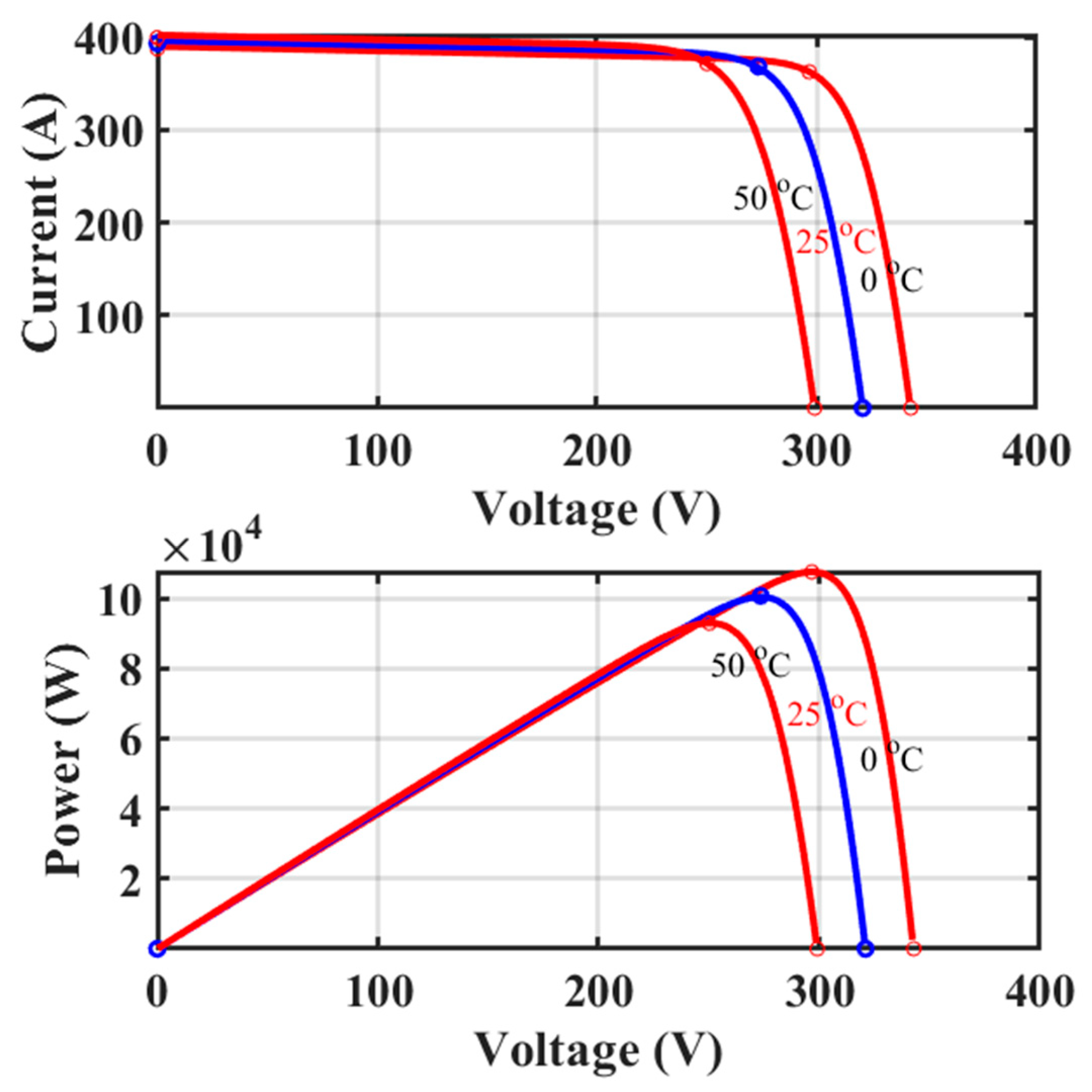


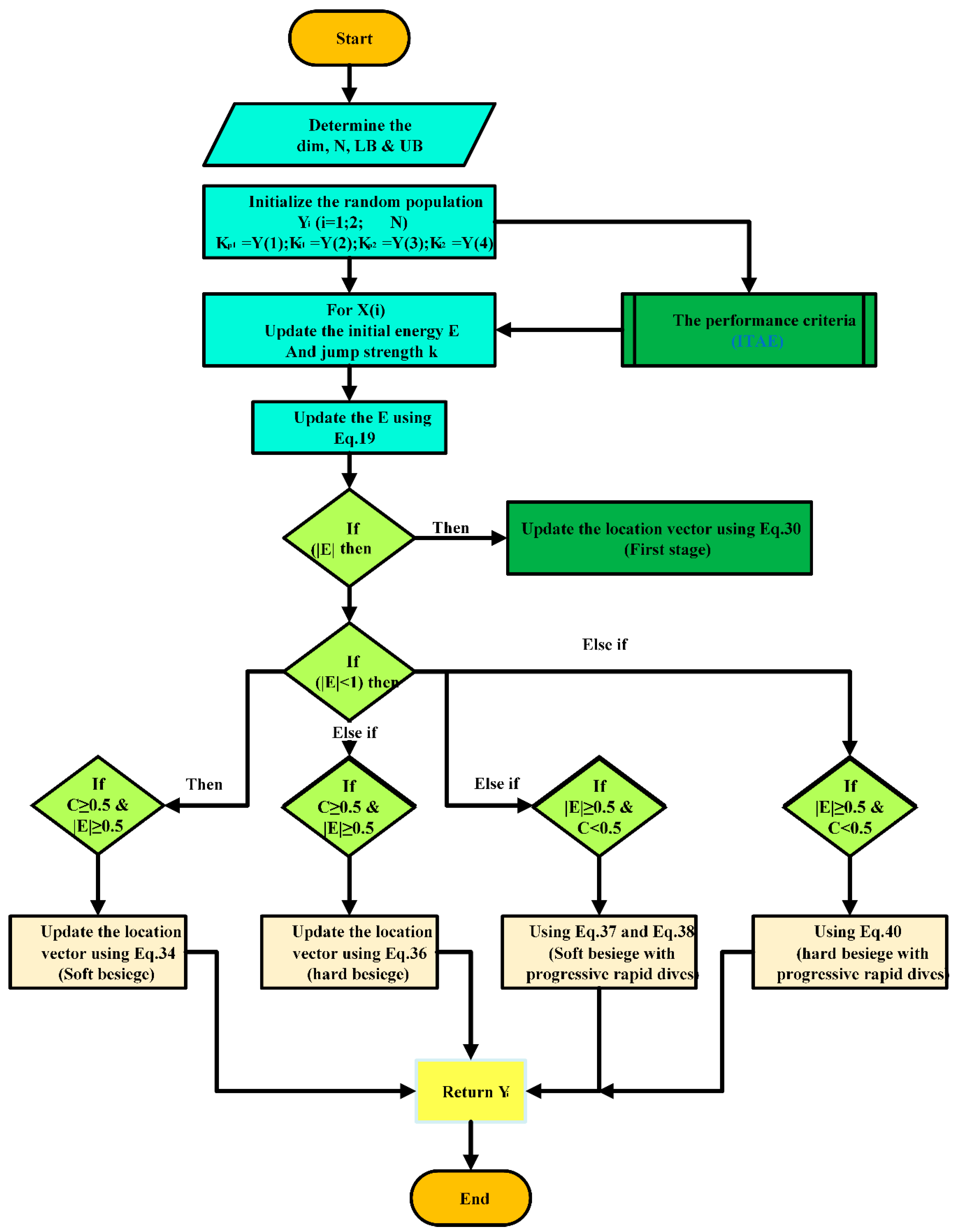
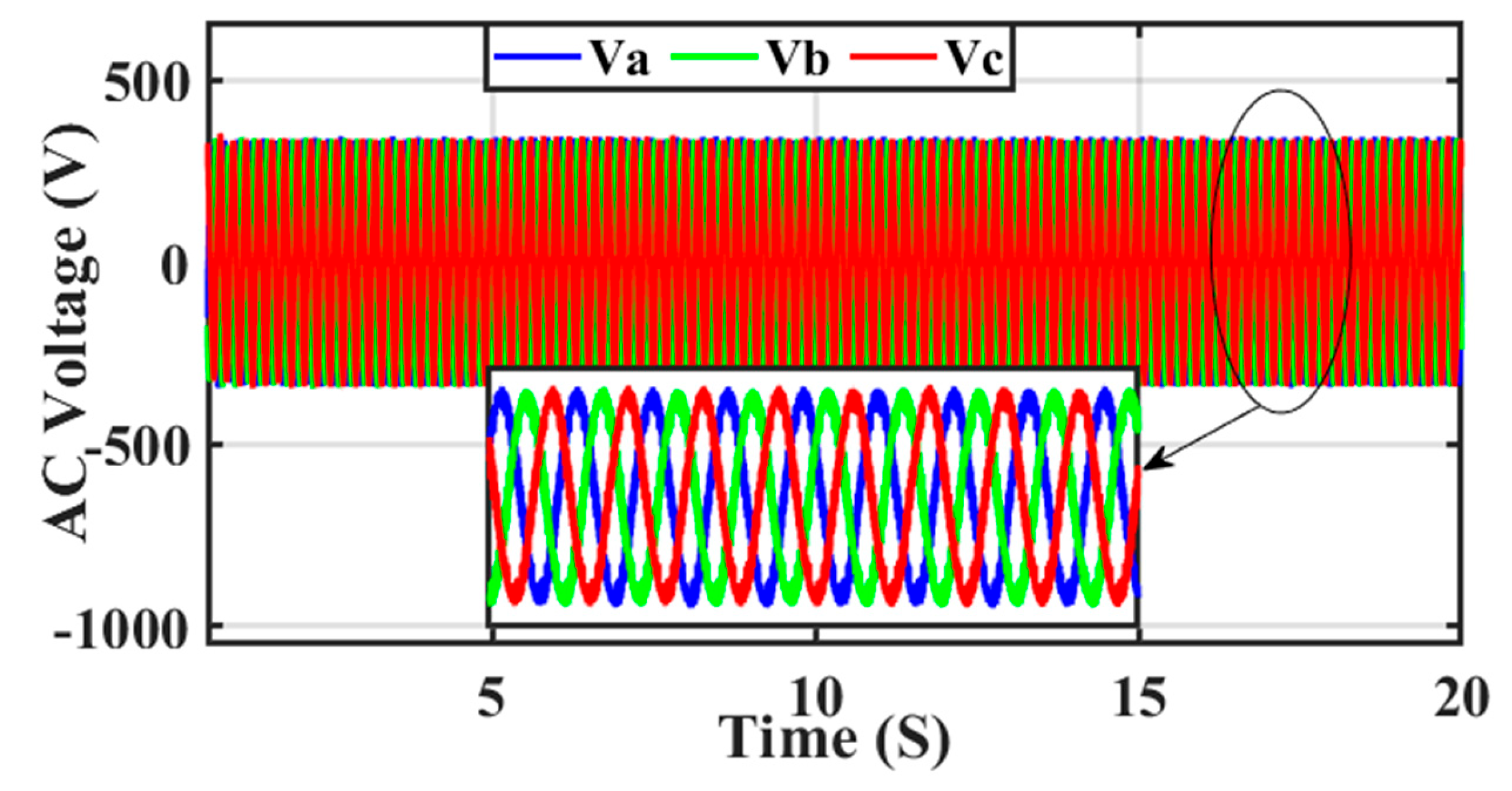
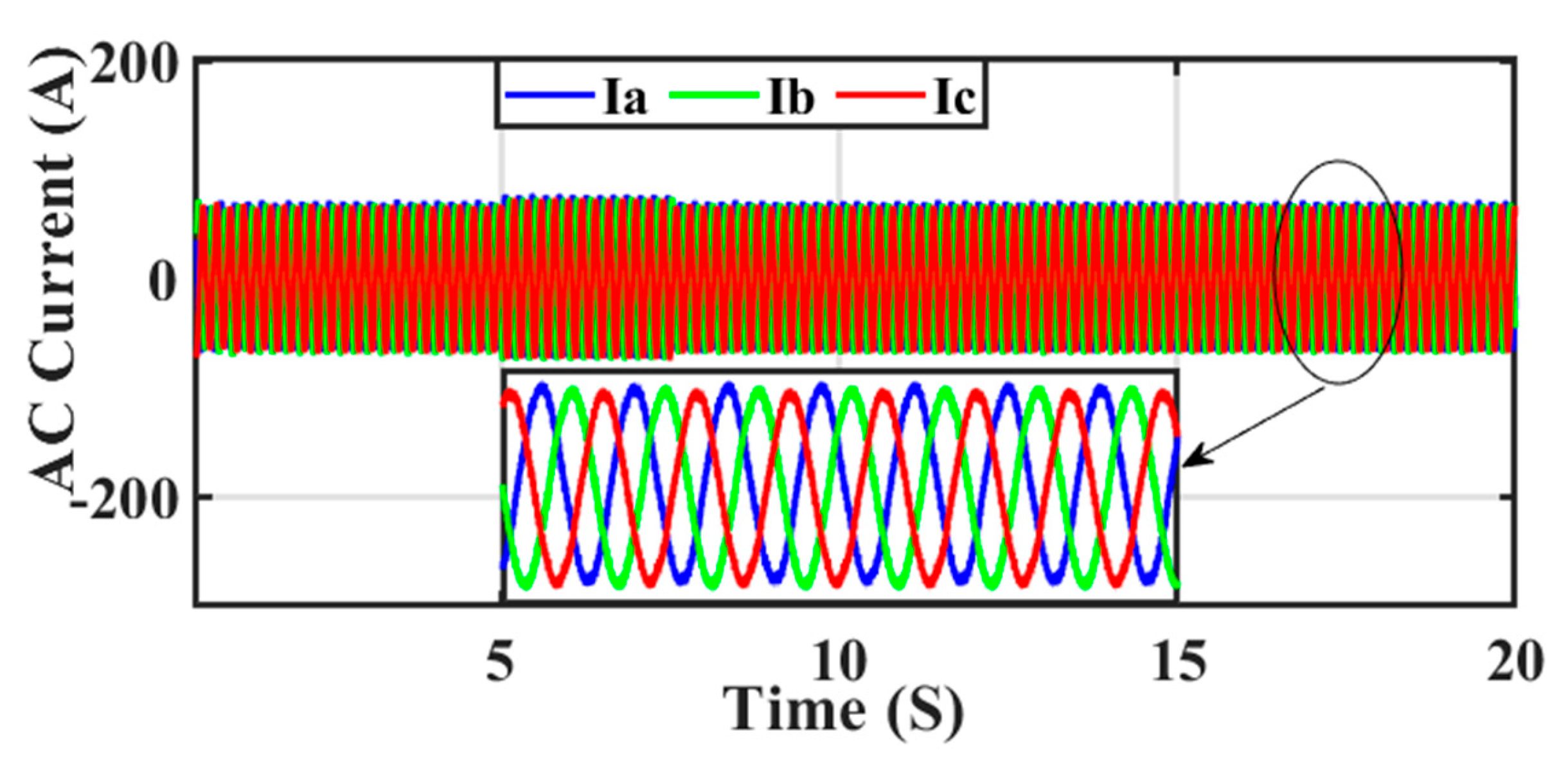

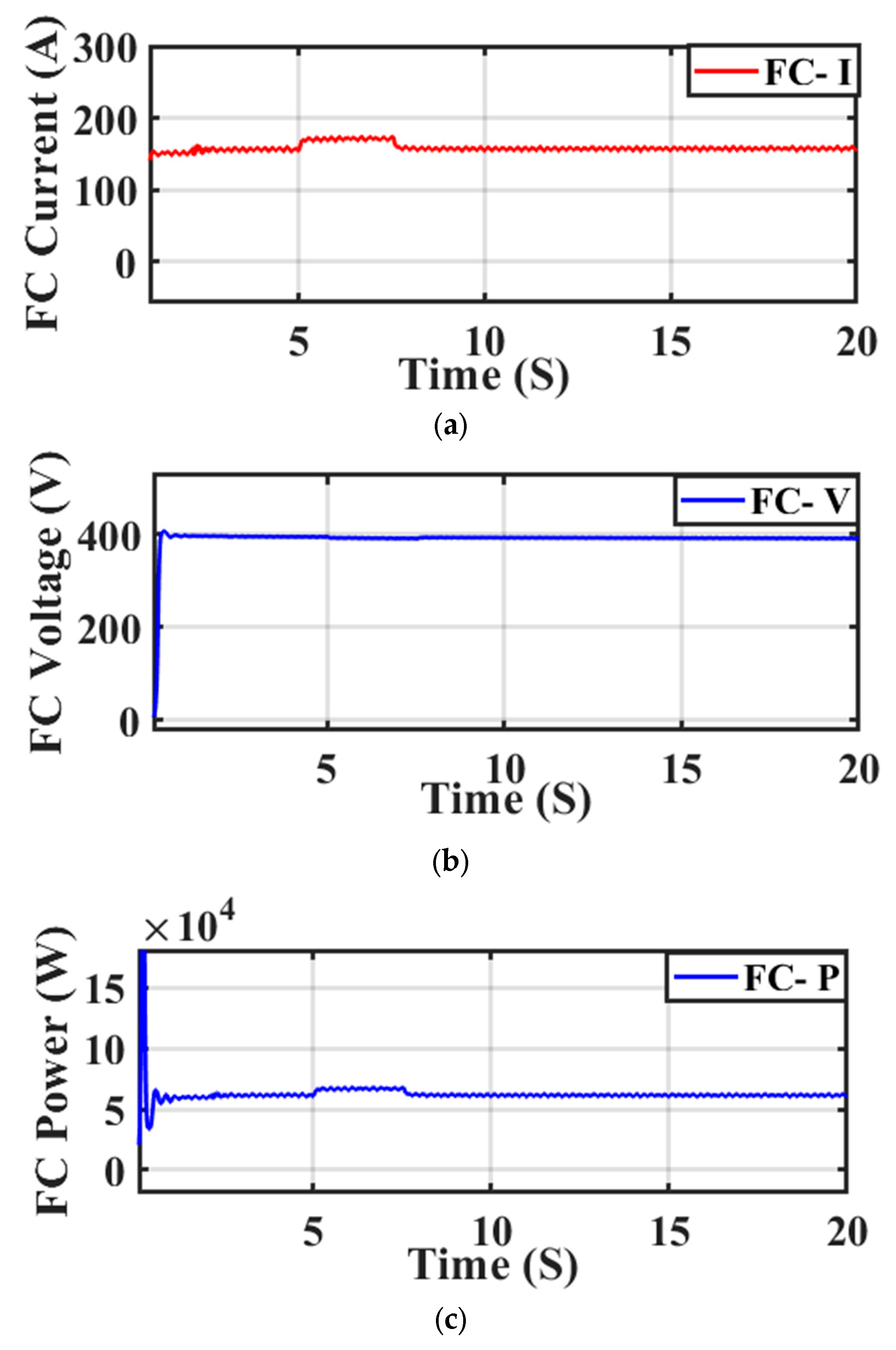



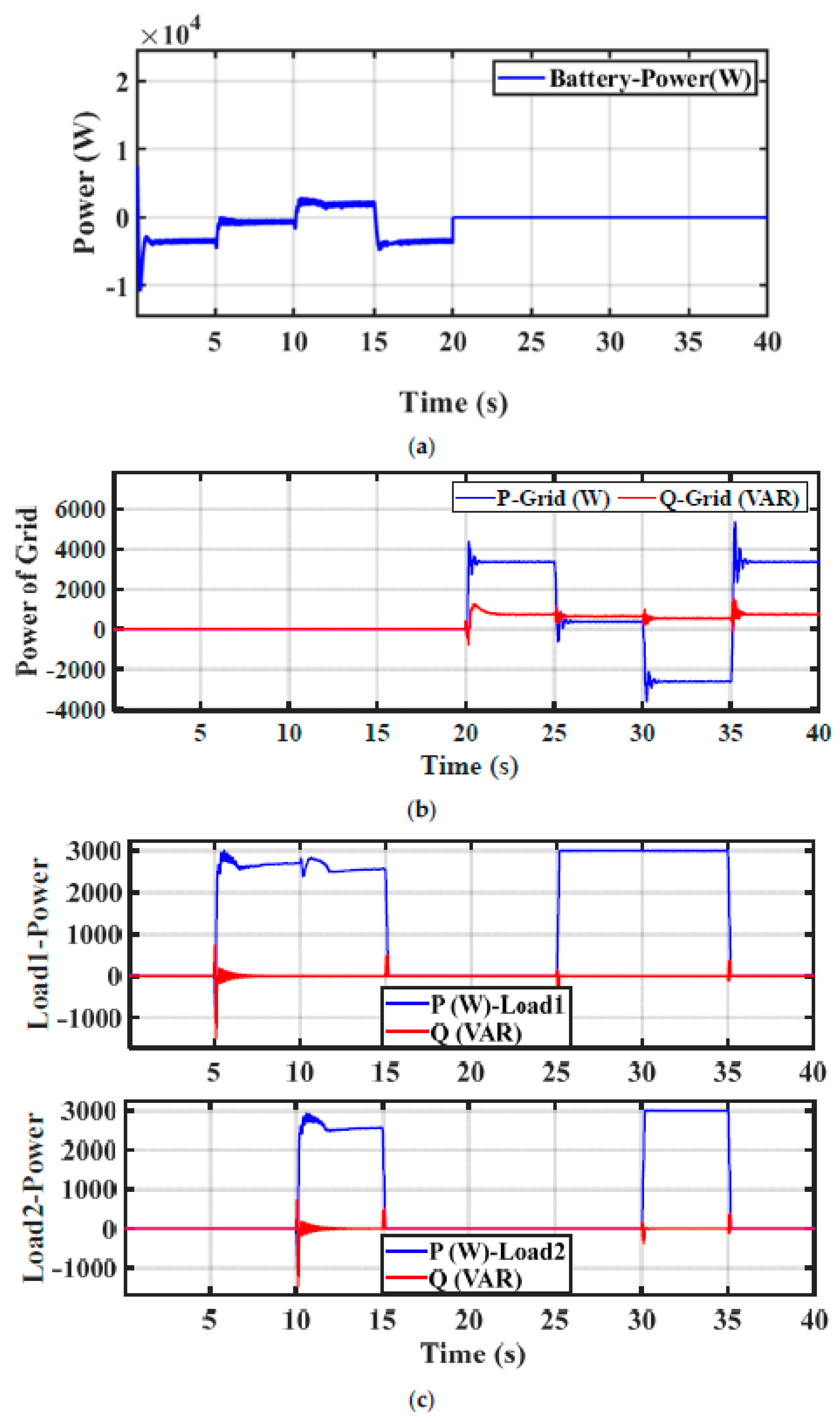
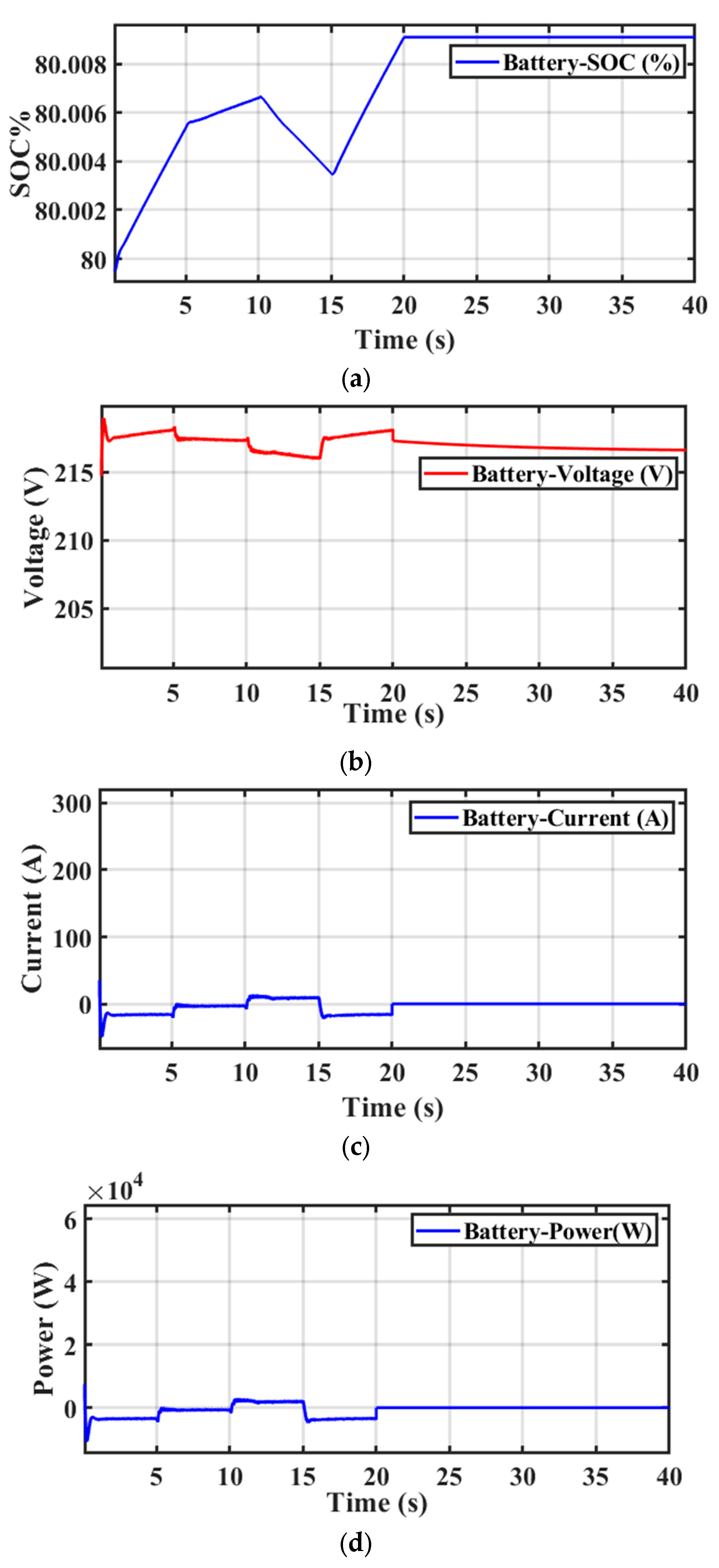
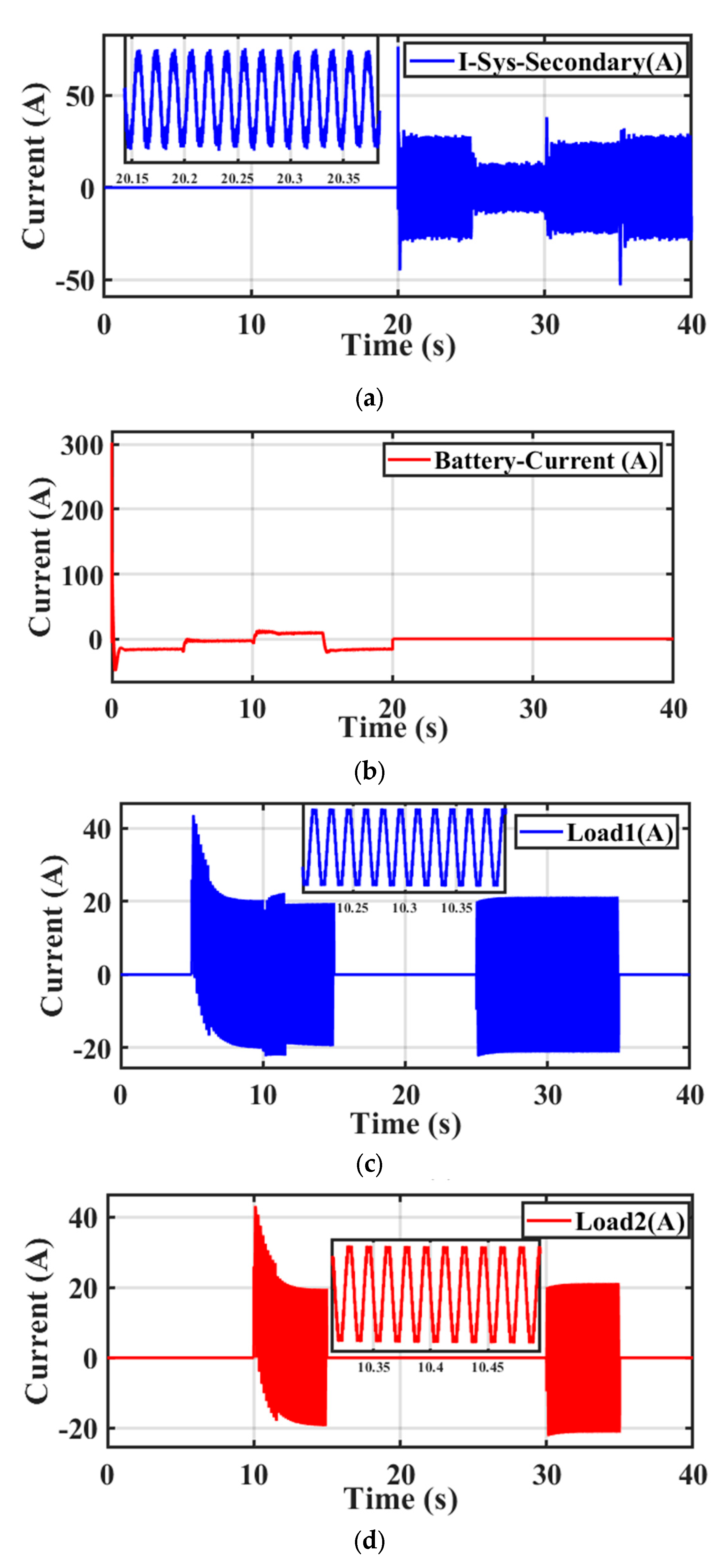
| Parameters | Traditional PC (TPC) | Interleaved PC | MS PC |
|---|---|---|---|
| Switching | Stiff | Fine | Fine |
| Switching losses | The highest | Medium | The least |
| Efficiency | The least | 1% higher than the TPC | The highest |
| Inputs | Separate PCs are completely combined into a hybrid system (HS). | Only one input | The multi-input HS is the most appropriate. |
| Stress on the switches | The highest | Medium | The least |
| Ripple Content | The highest | Medium | The least |
| Controller design | Simple | Simple | Complex |
| Stability | Not fixed across all operational points | Not uniform across all operational points | Stable in all working points |
| Circuit Topology | Every unidirectional port and secondary topology is the most usable. | Highly available architecture without a backup port and a bidirectional connector | A bidirectional connector with complex architecture and backup is accessible |
| Refs. | Year | Publisher | Description | Technique | Future Work |
|---|---|---|---|---|---|
| [15] | 2021 | MDPI | A dual input integrative link to the CUK PV, a SEPIC-based PC, and a wind power source are coupled to a DC microgrid | PWM | Redesigning the circuit topographic lowers switching stress and enhances performance |
| [16] | 2020 | Taylor and Francis | The innovative structure of the MS-PC allows it to alter the input source from any voltage variation while maintaining a fixed produced power | PI | A better structure and control system with fewer elements will be expanded from the test results |
| [17] | 2020 | IEEE | The 4 DC ports of the work’s innovative DC/DC PC design can be linked: 2 input ports, a bidirectional memory port, and a galvanically separated load port | Zero voltage Switching | The suggested PC will be examined using an adaptive load system |
| [18] | 2019 | Springer | A 3-port PC with 2 inputs and 1 output is examined. Suggested composite boost and buck-boost PC for bridging various ports | Linear matrix inequalities | The studied controller requires experimentation with different predictive controls and a stability test |
| [19] | 2021 | IEEE | The suggested PV string PC was designed for multiple inputs and just one output, making it suitable for partial shadowing scenarios | Event obsessed built on MPPT | The controller needs to advance to comply with genuine and universal MPP |
| [20] | 2023 | IET | The use of an MISO boost PC was suggested to increase the efficiency of renewable energy sources and output voltage while reducing the number of parts | Time-sharing scheme | Redesigning the circuit scheme lowers switching stress and enhances performance. Assessment of its impact on power quality |
| Parameter | Symbol | Value | Unit |
|---|---|---|---|
| Inductor turns number | 25 | ___ | |
| Core type | Ferrite core (UU-95) | ||
| Self-inductance of inductor (SIOI) 1 | 420 | µH | |
| SIOI 2 | 280 | µH | |
| SIOI 3 | 300 | µH | |
| PV port filter capacitor (PFC) | 100 | µF | |
| FC-PFC | 330 | µF | |
| Wind-PFC | 100 | µF | |
| Filtering capacitor | 330 | µF | |
| System | Parameter | Definition |
|---|---|---|
| PV | Photo current | |
| Saturation current of the diode | ||
| Short circuit current | ||
| Open circuit voltage | ||
| G | Irradiance (W/m2) | |
| k = 1.38 ×10−23 | Boltzmann’s constant | |
| q = 1.60 ×10−19 | Charge on an electron | |
| T | Temperature in °C | |
| n | Ideality factor | |
| Vg | Bandgap voltage | |
| K0 | Constant which is determined from ISC vs. T, dV/dI at voc per cell | |
| WS | The air density (kg/m3) | |
| A | Swept area of a rotor (m2) | |
| The power extracted by blades | ||
| Upwind velocity (m/s) | ||
| Downwind velocity (m/s) | ||
| Wind speed | ||
| Base (constant) wind speed | ||
| Ramp wind signal | ||
| Gust wind component | ||
| Noise wind component | ||
| T1R | Starting time of ramp (s) | |
| Max R | The ramp maximum value | |
| FC | Vsofc | Voltage of a solid oxide FC |
| E | Nernst reversible voltage | |
| Vact | Voltage activation loss | |
| Vcon | Voltage concentration loss | |
| Vohm | Voltage ohmic loss. | |
| E0 | Standard potential | |
| R | Universal gas constant | |
| T | Operating temperature in kelvins | |
| F | Faraday constant | |
| PH2 | Hydrogen partial pressure | |
| PH2O | Water’s partial pressure | |
| PO2 | Oxygen partial pressure | |
| I0 | Exchange current | |
| αi | Coefficient of charge transfer | |
| n | Number of moles of electrons transferred | |
| Cb | Concentration at the triple-phase boundary | |
| C∞ is | Bulk concentration of reactant | |
| n | Number of moles of electrons participating in the reaction | |
| T is the FC temperature | Constant coefficients of the FC | |
| T0 | 973 K | |
| γ | 0.2 Ω | |
| β | −2870 K | |
| r | Internal resistance of the SOFC |
| Technique | Obtained PI Gains | |||
|---|---|---|---|---|
| HHA-PI (proposed) | 3.7654 | 9.0224 | 1.9731 | 35.9733 |
| Description | Specifications |
|---|---|
| PV panel | MSX60 60 W |
| Open circuit voltage () | 21 V |
| Short circuit current () | 3.75 A |
| The voltage at max power () | 17.23 V |
| Current at max power () | 3.7 A |
| Maximum power () | 60 W |
| Battery model | Lead acid battery model |
| Maximum capacity | 400 Ah |
| Nominal voltage | 48 |
| Round tip efficiency | 80% |
| The energy capacity of a battery | 1 kWh |
| FC | Solid oxide (SOFC), stack size 2 MW, operating temperature 700–1000 °C/1202–1832 °F |
| WS | Rated power 1500 kW, PMSG |
| Inverter system | Rated 100 kVA, input 800 , 300 , 50 Hz. |
| , , and | 120, 500, and 800 µH |
| , , and | 330, 750, and 900 µF |
| 500 µF |
Disclaimer/Publisher’s Note: The statements, opinions and data contained in all publications are solely those of the individual author(s) and contributor(s) and not of MDPI and/or the editor(s). MDPI and/or the editor(s) disclaim responsibility for any injury to people or property resulting from any ideas, methods, instructions or products referred to in the content. |
© 2023 by the authors. Licensee MDPI, Basel, Switzerland. This article is an open access article distributed under the terms and conditions of the Creative Commons Attribution (CC BY) license (https://creativecommons.org/licenses/by/4.0/).
Share and Cite
Ibrahim, N.F.; Ardjoun, S.A.E.M.; Alharbi, M.; Alkuhayli, A.; Abuagreb, M.; Khaled, U.; Mahmoud, M.M. Multiport Converter Utility Interface with a High-Frequency Link for Interfacing Clean Energy Sources (PV\Wind\Fuel Cell) and Battery to the Power System: Application of the HHA Algorithm. Sustainability 2023, 15, 13716. https://doi.org/10.3390/su151813716
Ibrahim NF, Ardjoun SAEM, Alharbi M, Alkuhayli A, Abuagreb M, Khaled U, Mahmoud MM. Multiport Converter Utility Interface with a High-Frequency Link for Interfacing Clean Energy Sources (PV\Wind\Fuel Cell) and Battery to the Power System: Application of the HHA Algorithm. Sustainability. 2023; 15(18):13716. https://doi.org/10.3390/su151813716
Chicago/Turabian StyleIbrahim, Nagwa F., Sid Ahmed El Mehdi Ardjoun, Mohammed Alharbi, Abdulaziz Alkuhayli, Mohamed Abuagreb, Usama Khaled, and Mohamed Metwally Mahmoud. 2023. "Multiport Converter Utility Interface with a High-Frequency Link for Interfacing Clean Energy Sources (PV\Wind\Fuel Cell) and Battery to the Power System: Application of the HHA Algorithm" Sustainability 15, no. 18: 13716. https://doi.org/10.3390/su151813716
APA StyleIbrahim, N. F., Ardjoun, S. A. E. M., Alharbi, M., Alkuhayli, A., Abuagreb, M., Khaled, U., & Mahmoud, M. M. (2023). Multiport Converter Utility Interface with a High-Frequency Link for Interfacing Clean Energy Sources (PV\Wind\Fuel Cell) and Battery to the Power System: Application of the HHA Algorithm. Sustainability, 15(18), 13716. https://doi.org/10.3390/su151813716








